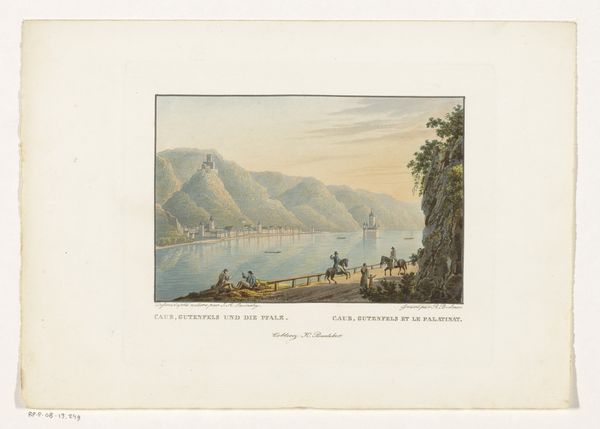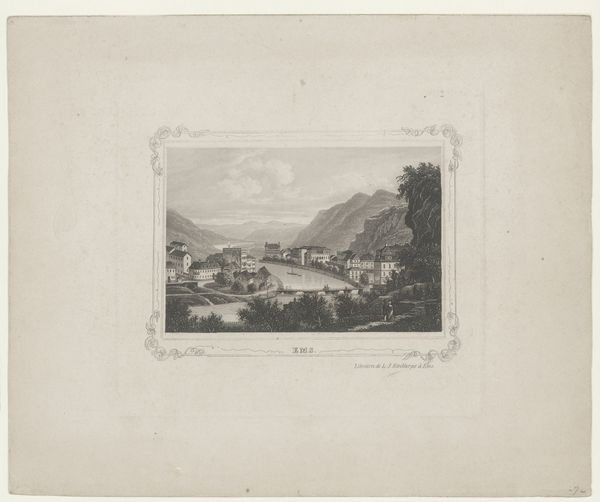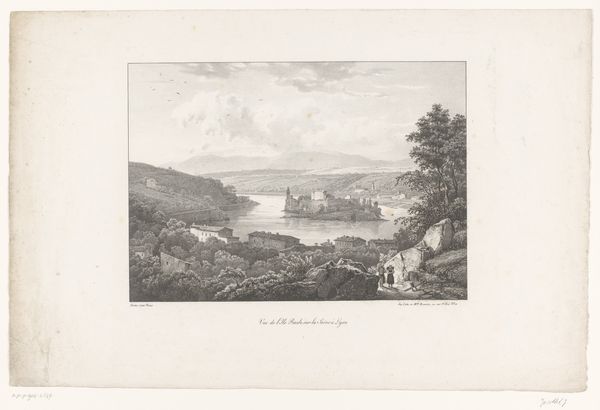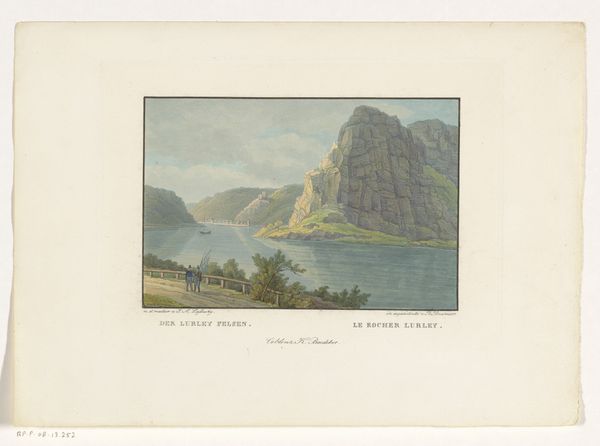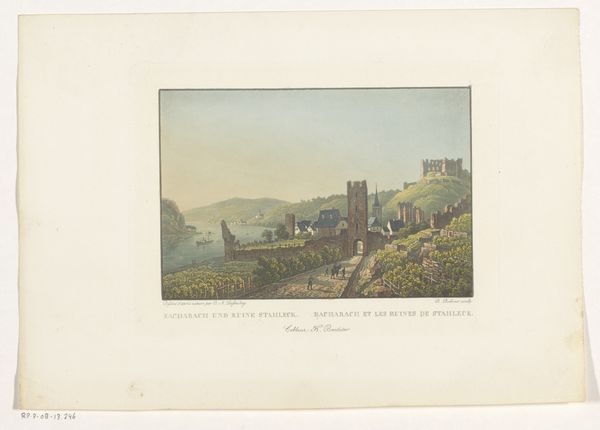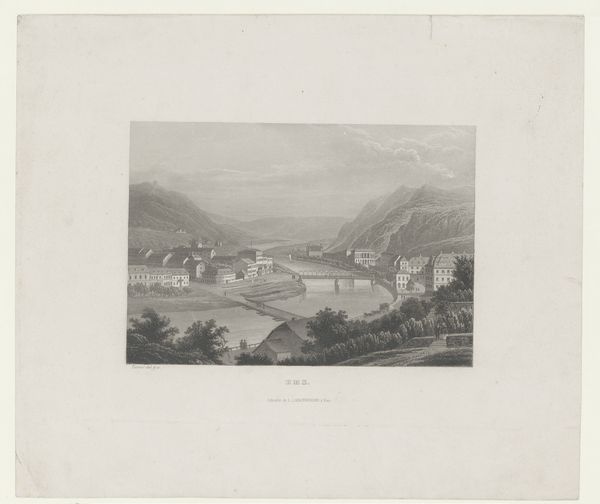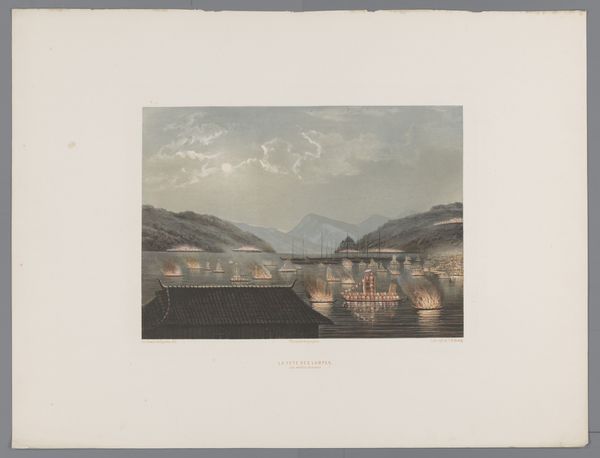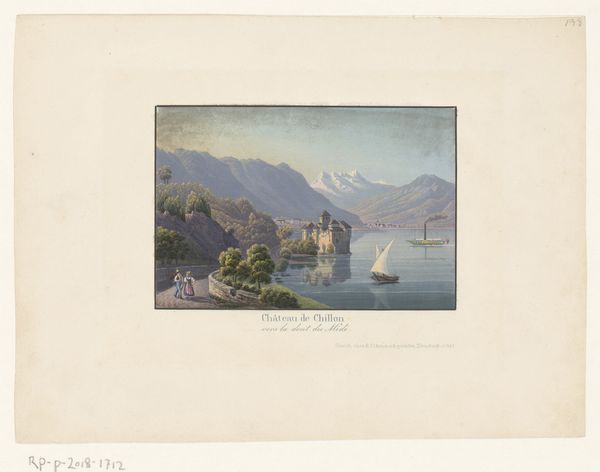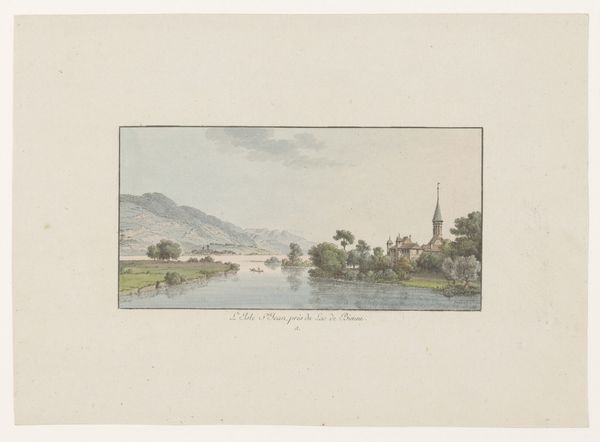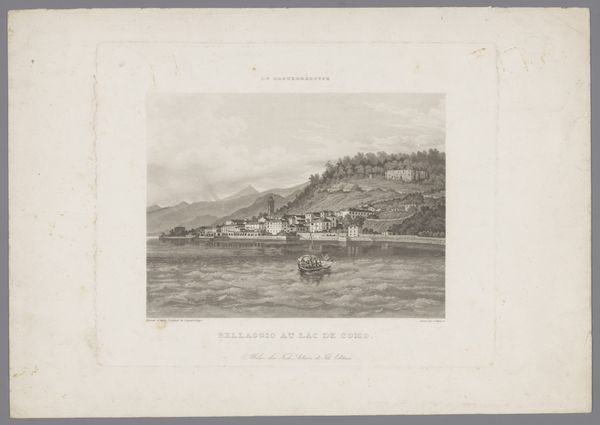
print, etching, watercolor
# print
#
etching
#
landscape
#
river
#
house
#
watercolor
#
romanticism
#
watercolour illustration
#
watercolor
Dimensions: height 118 mm, width 158 mm
Copyright: Rijks Museum: Open Domain
Curator: A serene and quite pastoral vista, wouldn't you agree? Editor: It's incredibly still. Almost… melancholic. There's a real sense of abandonment evoked in the landscape and decaying facade of this architecture, its whiteness contrasts starkly with the blue sky and its reflection. Curator: Indeed. We're looking at "Gezicht op de ruïne van Friedrichstein", or "View of the Ruins of Friedrichstein", created sometime between 1832 and 1859 by Rudolf Bodmer. It's a rather intriguing print, a combination of etching and watercolor. Editor: Etching gives it that delicate line work, I see. Looking closer at the processes by which something like this comes together, it looks as though a master craftsman was contracted out to produce the physical printing of it based upon some image or maquette created by Bodmer? The line thickness would definitely suggest it, even with the added watercolor giving a feeling of being mass-produced and widely disseminated as picturesque keepsakes rather than something created to be viewed in a hallowed museum such as this. Curator: A most insightful observation. Now consider how Bodmer constructs the ruin in relation to its environment. The interplay of light and shadow, the way the form echoes in the still water... it's all orchestrated to generate a deep visual resonance. And don't neglect the relationship between horizontal and vertical, as how they define an orderly composition to offset against its dilapidated ruin as if frozen by time. Editor: Orderly, perhaps. The composition does, certainly lead the eye through a deliberate progression. However, its decay cannot be denied. I cannot escape the contrast between man-made edifice against the relentless, overwhelming forces of nature. It brings forth questions, wouldn't you say? What conditions and materials were used to build this ruin, or its labor to construct against those materials sourced from all corners of earth to construct these long decaying buildings that seemingly become obsolete and disposable, now just relegated as memories. Curator: An inevitable cycle. Editor: Almost biblical! A narrative about the rise and inevitable fall of man through his constructions? Food for thought! Curator: Well, on that sobering note, I'd say we've each illuminated this particular vista rather wonderfully, revealing its beauty and hinting at the deeper, somewhat somber, realities that Bodmer seemed to express with a touch of delicacy.
Comments
No comments
Be the first to comment and join the conversation on the ultimate creative platform.
